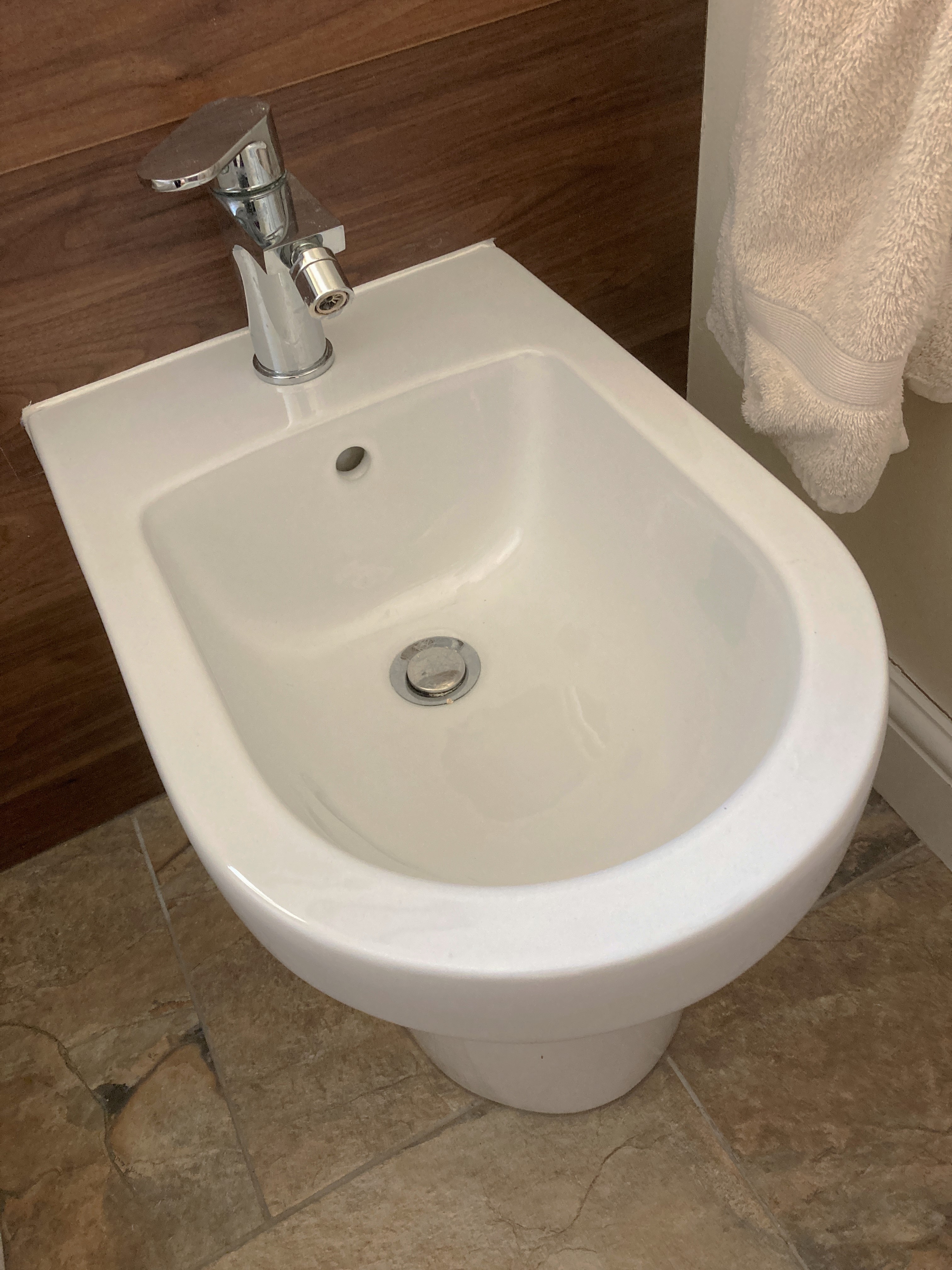Bidet
| Line 29: | Line 29: | ||
There is some debate over whether bidets are more hygienic than toilet paper alone. The sole use of a bidet can save a significant amount of paper. However, it is believed that a combination of the two provides the greatest hygienic benefit. | There is some debate over whether bidets are more hygienic than toilet paper alone. The sole use of a bidet can save a significant amount of paper. However, it is believed that a combination of the two provides the greatest hygienic benefit. | ||
| − | = Related articles on Designing Buildings | + | = Related articles on Designing Buildings = |
* Lavatory. | * Lavatory. | ||
| Line 35: | Line 35: | ||
* Sanitary pipework. | * Sanitary pipework. | ||
* Sanitaryware. | * Sanitaryware. | ||
| + | * Sink. | ||
* Types of sanitary appliances. | * Types of sanitary appliances. | ||
* Waste water. | * Waste water. | ||
[[Category:DCN_Definition]] [[Category:DCN_Product_Knowledge]] [[Category:Definitions]] [[Category:Water]] [[Category:Products_/_components]] | [[Category:DCN_Definition]] [[Category:DCN_Product_Knowledge]] [[Category:Definitions]] [[Category:Water]] [[Category:Products_/_components]] | ||
Revision as of 17:54, 12 January 2022
Contents |
Introduction
The Building Regulations Approved Document G: Sanitation, hot water safety and water efficiency suggests that the term ‘sanitary appliance’ means a ‘… WC, urinal, bath, shower, washbasin, sink, bidet and drinking fountain. It also includes appliances that are not connected to a water supply (e.g. composting toilet) or drain (e.g. waterless urinal).’
These appliances collect and remove water and other waste matter. They are generally grouped into two categories: soil appliances and wastewater appliances. A bidet (either pedestal or wall hung) is categorised as a soil appliance and is used for hygienic matters.
History
The word bidet comes from the French term for "little horse" - a reference to the position of a person who is using the device. It originated in 16th century France, although the specifics of its introduction are unknown.
It may have been used along with a chamber pot, both as a device for washing and a contraception aid. Until the 1900s, bidets were most often found in bedrooms, but when modern plumbing was introduced to the bathroom, bidets and chamber pots moved out of the bedroom.
Types of bidets
Bidet shower. This is also referred to as a bidet spray, bidet sprayer or health faucet. It is a separate handheld device with a trigger.
Conventional. This is a separate plumbing fixture that is generally installed near a toilet.
Add-on bidet. This is a device with a nozzle that is attached to a toilet bowl or toilet seat. It may also be referred to as a combined toilet, bidet attachment or combi toilet.
Cultural preferences
Bidets are commonly used in some parts of the world and are legally required in certain countries, including Portugal and Italy. They are also frequently found in other parts of the world, including Islamic countries, Africa, South America and Japan.
Japanese bidets sometimes include features such as seat warmers, dryers and so on, making them popular in other parts of the world (including Asia and the US). However, bidets are not commonly found in the UK or the US.
There is some debate over whether bidets are more hygienic than toilet paper alone. The sole use of a bidet can save a significant amount of paper. However, it is believed that a combination of the two provides the greatest hygienic benefit.
Related articles on Designing Buildings
- Lavatory.
- Sanitary accommodation.
- Sanitary pipework.
- Sanitaryware.
- Sink.
- Types of sanitary appliances.
- Waste water.
Featured articles and news
Infrastructure that connect the physical and digital domains.
Harnessing robotics and AI in challenging environments
The key to nuclear decommissioning and fusion engineering.
BSRIA announces Lisa Ashworth as new CEO
Tasked with furthering BSRIA’s impressive growth ambitions.
Public buildings get half a million energy efficiency boost
£557 million to switch to cleaner heating and save on energy.
CIOB launches pre-election manifesto
Outlining potential future policies for the next government.
Grenfell Tower Inquiry announcement
Phase 2 hearings come to a close and the final report due in September.
Progress from Parts L, F and O: A whitepaper, one year on.
A replicated study to understand the opinion of practitioners.
ECA announces new president 2024
Electrical engineer and business leader Stuart Smith.
A distinct type of countryside that should be celebrated.
Should Part O be extended to existing buildings?
EAC brands heatwave adaptation a missed opportunity.
Definition of Statutory in workplace and facilities management
Established by IWFM, BESA, CIBSE and BSRIA.
Tackling the transition from traditional heating systems
59% lack the necessary information and confidence to switch.
The general election and the construction industry
As PM, Rishi Sunak announces July 4 date for an election.
Eco apprenticeships continue help grow green workforce
A year after being recognised at the King's coronation.
Permitted development rights for agricultural buildings
The changes coming into effect as of May 21, 2024.






















